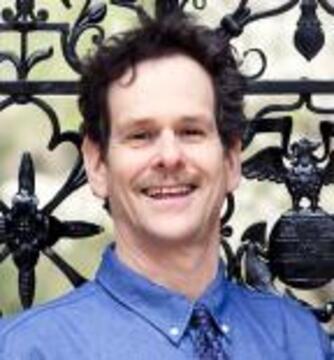Richard Cohn
Specializations: 19th-century harmony, musical meter, geometric models of musical systems, beat-class set theory, analysis of world music, atonal pitch-class theory
About: Richard Cohn received his PhD from the Eastman School of Music in 1987, with a dissertation on transpositional combination in atonal music, under the supervision of Robert D. Morris. Early articles focused on music of Bartók and Schenkerian theory. He taught in the Music Department at the University of Chicago from 1985, where he served as Department Chair from 1998 to 2001. In 2004, he founded Oxford Studies in Music Theory, which he edited for Oxford University Press for ten years. In 2005 he was appointed Battell Professor of the Theory of Music at Yale University. He is currently Executive Editor of the Journal of Music Theory.
“Audacious Euphony: Chromatic Harmony and the Triad’s Second Nature,” was published by Oxford University Press in 2012. He recently contributed to and co-edited a volume on David Lewin’s analytical writings. In preparation is a general model of musical meter with applications for European, African, and African-diasporic music. Cohn’s articles have twice earned the Society for Music Theory’s Outstanding Publication Award. He has presented keynote lectures and workshops in the UK, France, the Netherlands, Germany, Australia, and (in 2015) Singapore.
Current Projects (summer 2014)
The Method of Musical Meter: States, Syntaxes, Strategies, monograph in preparation
“Meter Without Tactus,” accepted for presentation at SMT 2014
“A Platonic Model of Funky Rhythms,” paper in preparation; preliminary presentation at http://www.youtube.com/watch?v=sItSHfYG3oY
“Music is Regulated by Two Systems of Relation. Why do We Only Teach One of Them?” Paper in Preparation
“Meter,” Commissioned article for Oxford Handbooks Online, ed. Alexander Rehding
Representative Publications:
David Lewin’s Morgengruss: Text, Context, Commentaries, co-edited with David Bard-Schwarz, Oxford University Press, forthcoming. Solo-authored Introduction, as well as an essay: “Lewin’s Listener Listening: the Beholder’s Share”
Audacious Euphony: Chromatic Harmony and the Triad’s Second Nature, Oxford University Press, 2012
“Peter, the Wolf, and the Hexatonic Uncanny,” Tonality 1900-1950. Concept and Practice, eds. Phillip Rupprecht, Ullrich Scheideler, and Felix Woerner, Stuttgart: Franz Steiner, 2012.
“Tonal Pitch Space and the (neo-) Riemannian Tonnetz,” in Oxford Handbook of Neo-Riemannian Music Theories, Edward Gollin and Alexander Rehding, ed., forthcoming Oxford University Press, 2011.
“Pitch-Time Analogies and Transformations in Bartók’s Sonata for Two Pianos and Percussion,” in Music Theory and Mathematics: Chords, Collections, Transformations, ed Jack Douthett et. al., University of Rochester Press (2008).
“Hexatonic Poles and the Uncanny in Parsifal.” Opera Quarterly 22.2 (2006), 230.
“Uncanny Resemblances: Tonal Signification in the Freudian Age,” Journal of the American Musicological Society 57.2 (2004): 285-323
“A Tetrahedral Model of Tetrachordal Voice Leading Space,” Music Theory Online 9.4 (2003)
“Complex Hemiolas, Ski-Hill Graphs, and Metric Spaces,” Music Analysis 20.3 (October 2001), pp. 295-326
“Weitzmann’s Regions, My Cycles, and Douthett’s Dancing Cubes,” Music Theory Spectrum 22.1 (2000): 89-103.
“As Wonderful as Star Clusters: Instruments for Gazing at Tonality in Schubert” Nineteenth-Century Music 22.3 (1999): 213-232.
“Neo-Riemannian Operations, Parsimonious Trichords, and their Tonnetz Representations,” Journal of Music Theory 41.1 (1997), 1-66.
“Maximally Smooth Cycles, Hexatonic Systems, and the Analysis of Late-Romantic Triadic Progressions.” Music Analysis 15.1 (1996), 9-40.
“Transpositional Combination of Beat-Class Sets in Steve Reich’s Phase-Shifting Music.” Perspectives of New Music 30/2 (1992), 146-177.
“The Autonomy of Motives in Schenkerian Accounts of Tonal Music.” Music Theory Spectrum 14/2 (1992), 150-170.
“Dramatization of Hypermetric Conflicts in the Scherzo of Beethoven’s Ninth Symphony,” Nineteenth-Century Music 15/3 (1992), 22-40.
“Bartók’s Octatonic Strategies: A Motivic Approach.” Journal of the American Musicological Society 44 (1991): 262-300.
“Inversional Symmetry and Transpositional Combination in Bartók.” Music Theory Spectrum 10 (1988): 19-42.
